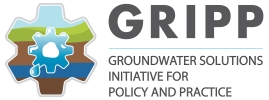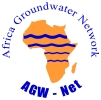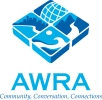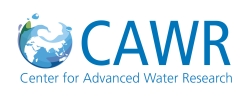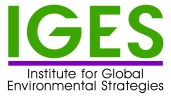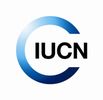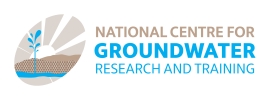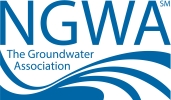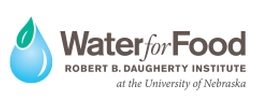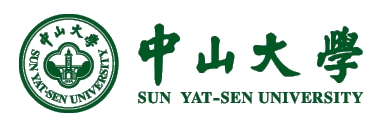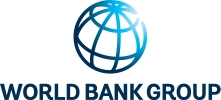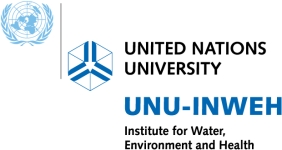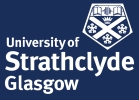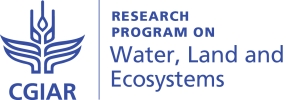Using managed aquifer recharge (MAR) to buffer water storage and shield against saltwater ingress
Why MAR in coastal Bangladesh and how does it work?
Bangladesh is a fast-growing country in South Asia, with an estimated population of over 155 million people. Much of coastal Bangladesh is vulnerable to frequent flooding due to cyclonic storm surges, with an estimated 16.5 million people living in vulnerable areas [1]. The inhabitants in these areas suffer from acute or seasonal water shortage as groundwater from both shallow and deep aquifers is saline. There is almost no rainfall for 7 months of the year, and fresh surface water reserves are often brackish due to storm surges and evaporation. To compound matters, groundwater from many tube wells is naturally contaminated with arsenic [2], [3], and most of the community-level water sources are heavily contaminated with pathogenic microorganisms, such as bacteria [4]. The practice of brackish water aquaculture in coastal areas has further aggravated the situation by contaminating the limited shallow fresh groundwater reserves by increasing salinity [5]. The experience garnered during cyclones Sidr and Aila in 2007 and 2009, respectively, emphasized the need for more reliable, safer freshwater sources, especially to the poorest communities. Consequently, managed aquifer recharge (MAR) approaches were proposed to enhance aquifer storage of freshwater, especially in the dry season, by utilizing the abundant rainfall received during the monsoon, which to a large extent is lost to surface runoff [6]. This has been proven as a climate-resilient, year-round water storage and supply option in other parts of the world [7], [8]. Storage of freshwater in the ground also offers significant flood protection during the regular cyclonic surges, when other traditional water sources are damaged by floods, and it is relatively safe from contamination.
Application of MAR can be simple, cost-effective and maintained at the community level, where freshwater is collected from ponds and rooftops. After passing this water through a simple sand filter, it is infiltrated into the shallow saline aquifer through a ring of infiltration wells. This creates a floating lens of improved quality water underground. The freshwater lens stays intact underground, because the water mixes only minimally with the inherent brackish or saline water. This freshwater can then be abstracted using a standard hand pump to yield water throughout the year (Figure 1). MAR has great potential for groundwater banking along the country’s coastal belt, particularly in the northern fringe of the Sundarban mangrove forests in Khulna, Satkhira and Bagerhat districts.
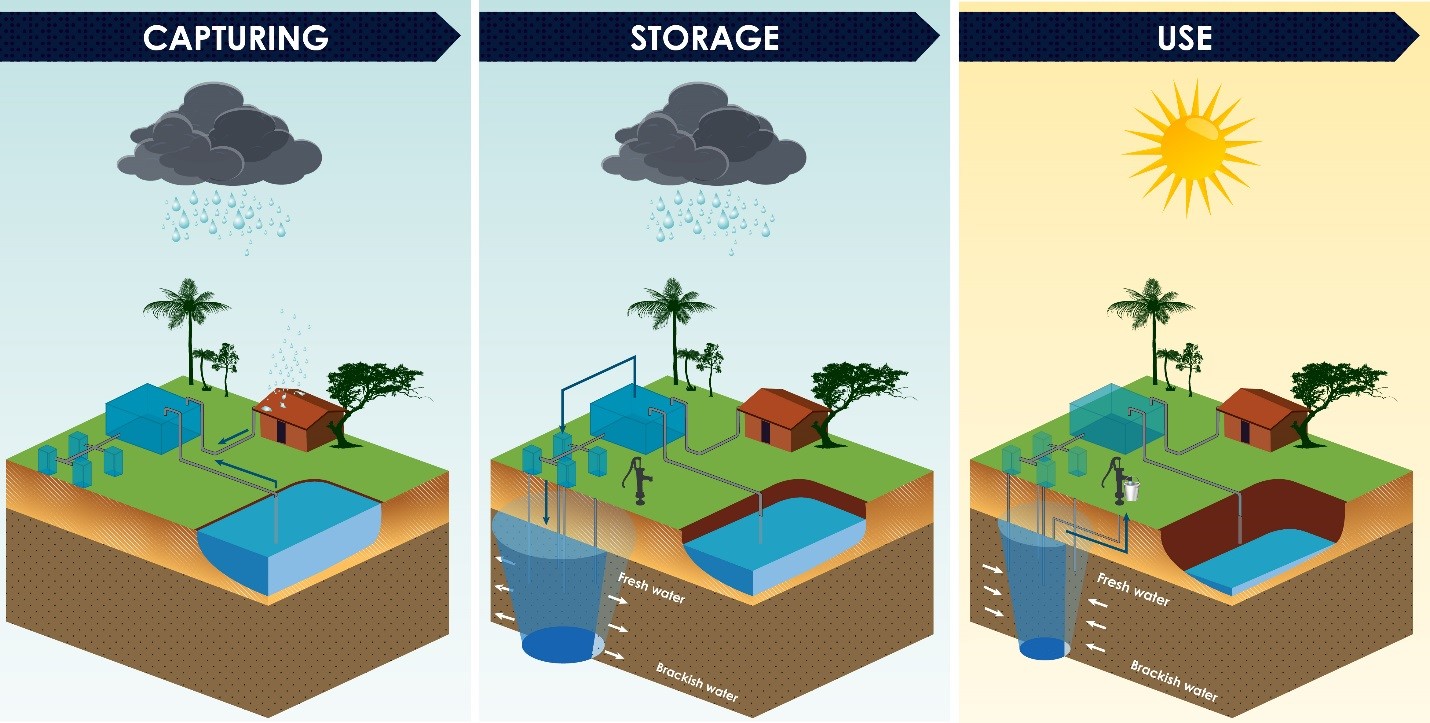
Figure 1. Schematic diagram showing various stages of the MAR system (source: Acacia Water).
Each MAR scheme can serve several hundred people and can be maintained by community groups. A typical scheme consists of four to six large diameter infiltration wells along with an on-the-ground filtration unit (14 x 7 x 5 ft3, reinforced cement and concrete or brick tank) divided into two chambers. A sand filter is placed in the first chamber (7 x 7 x 5 ft3) and the other chamber with the same dimensions is used for storing and transmission of filtered water to the infiltration wells. In this system, the filtration unit is placed 5 feet above the ground. Pond water is pumped using a diesel or electric pump into the filtration chamber, and filtered water from the other chamber flows by gravity to the infiltration wells through pipe connections fitted with a flow meter and gate valves [9] (Figure 2).
Specific advantages of this coastal MAR approach are highlighted below: [10]
- A continuity to water supplies during periods of droughts.
- Potential for contaminant and pathogen attenuation and natural disinfection during subsurface storage, enhanced by long resident times.
- Freshening zones in brackish aquifers that otherwise would have limited beneficial use.
- A reliable storage during periods of flooding and inundation.
- Operation and maintenance (O&M) of the scheme is not very expensive compared to other existing options in the area, and can be managed easily by a trained caretaker.
- Potential to provide safe water in arsenic-affected areas.
- Replenishing aquifers that are experiencing significant depletion due to reduced groundwater recharge and/or over-abstraction.
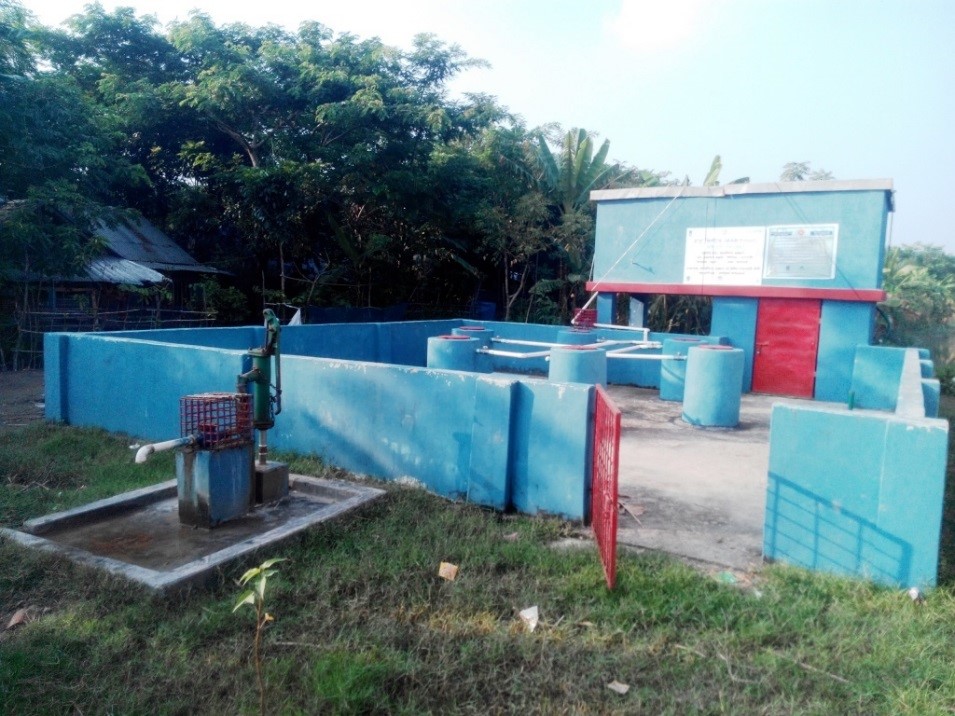
Figure 2. A typical MAR system showing various components (photo: Riyadul Islam).
What has been done so far in Bangladesh?
In 2009, the United Nations Children’s Fund (UNICEF) piloted the MAR approach in the coastal districts of Satkhira, Khulna and Bagerhat, which are three of the priority districts of the United Nations Development Assistance Framework (UNDAF), in partnership with the Department of Public Health Engineering (DPHE), the University of Dhaka, Acacia Water from the Netherlands and local nongovernmental organizations. MAR systems were initially constructed at four sites and this was expanded to 20 sites by 2012. Of these initial sites, twelve are still operational and actively being used by the communities. Based on the successful results of the piloting phase, an additional 75 MAR systems were constructed during the period 2014-2015 (Figure 3). After regular infiltration and monitoring for 2 years, 56 of those systems were handed over to the community to gain access to drinking water, as salinity levels had reduced to the potable limit due to freshwater accumulation and gradual displacement of saltwater underground. At each site, a User Committee (UC) was established, and a caretaker from a local community operates, maintains and monitors the MAR system under the supervision of the UC.
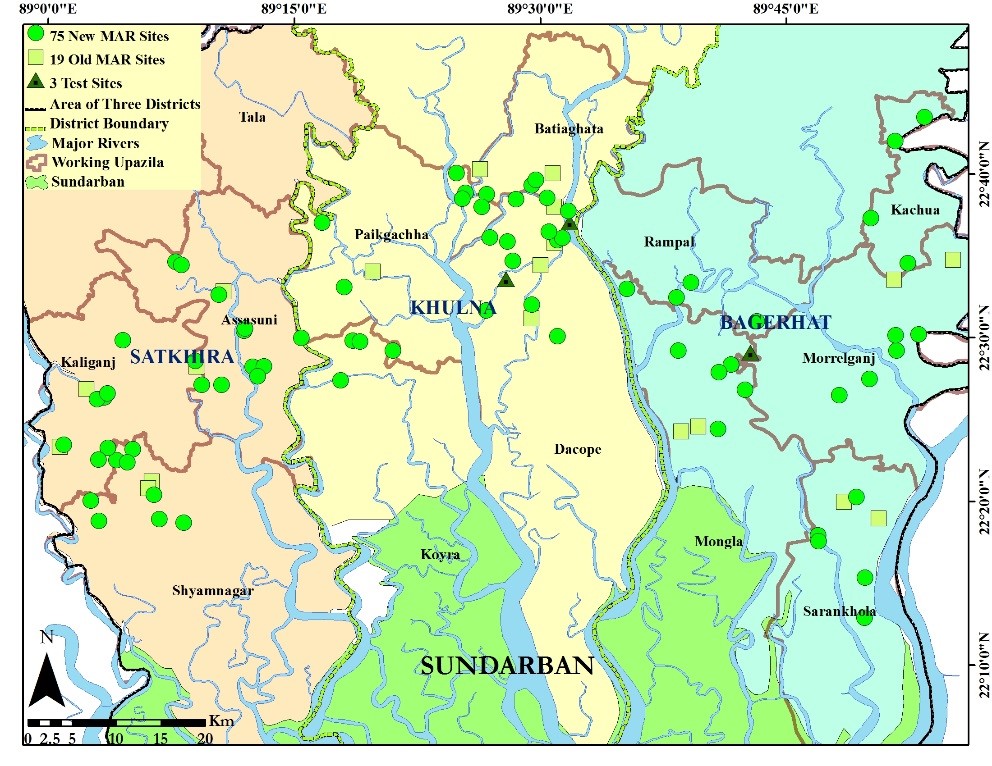
Figure 3. Location of MAR sites constructed in the three coastal districts of Khulna, Satkhira and Bagerhat (source: Riyadul Islam).
Results and findings
In addition to the improvement in water quality and reliability, the schemes were conveniently located, which significantly reduced the water collection times for community members. Importantly, the schemes were constructed using mainly local materials and local contractors, significantly reducing the construction and maintenance costs. Field monitoring of 97 sites showed varying rates of salinity reductions in pumped water. It took between 6 months and 2 years for salinity levels to become suitable for potable use (< 2,000 µS/cm of electrical conductivity). The most significant factors influencing salinity reduction are rate of infiltration and salinity of the source water. Arsenic, iron and coliform concentrations in groundwater also decrease considerably due to high infiltration of source water with lower concentrations or owing to attenuation in the subsurface.
Challenges and lessons learned
Community acceptance and ownership are vital for the success of water supply technologies in saline areas. There is a need to test various O&M models with local beneficiaries to ensure there is continued support. Communities usually prioritize ways through which they can get drinking water easily and are mainly concerned about two specific parameters in the water supplied: smell and color. Some MAR sites faced odor issues in the water abstracted, but this can be removed by simply storing the water overnight before drinking. Further lessons learned are mentioned below:
- MAR schemes are often superior to traditional rural water supply options, as water quality and quantity appear to be improved and more reliable in terms of accessibility (Table 1).
- Regular water quality monitoring is critical for sustained delivery of safe water, especially in relation to bacteria, salinity, turbidity and arsenic.
Ensuring access to safe drinking water for all has been an important goal of MAR projects, as most of the coastal inhabitants, especially the poor, do not have access to year-round safe water, and other sources such as reverse osmosis (RO) and piped water supply (where available) are only affordable to the wealthier people. Thus, MAR as a community-based water supply option provides water to the poor almost free of cost (BDT 20/month), and charges more to the wealthier portion of the community (BDT 50-100/month) for its regular O&M.

Table 1. Comparison of MAR and other water supply options in coastal areas of Bangladesh (Source: K. M. Ahmed).
What’s next?
Successful upscaling of MAR in coastal areas of Bangladesh should focus on two specific points of interest: (i) adapt and adopt the system design for peri-urban areas; and (ii) continuation of small-scale scheme implementation to provide water for rural communities. As MAR schemes require special provision and resources for their O&M (mainly the caretaker’s salary and small regular expenses), extra care needs to be taken. Besides having a well-trained caretaker, a structured financial compensation system is also needed for the poor coastal communities.
However, MAR requires a different approach to that followed in mainstream water supply options. Capacity building within the local communities is needed for sustainable O&M. Still, the advantages in terms of water quality and continued water supply in the saline deltas are worth the investment, as it provides a valuable alternative option for freshwater supply in rural and urban areas of Bangladesh’s coastal belt.
[1] Karim, M.F.; Mimura, N. 2008. Impacts of climate change and sea-level rise on cyclonic storm surge floods in Bangladesh. Global Environmental Change 18(3): 490-500.
[2] Ahmed, K.M.; Bhattacharya, P.; Hasan, M.A.; Akhter, S.H.; Alam, S.M.M.; Bhuyian, M.A.H.; Imam, M.B.; Khan, A.A.; Sracek, O. 2004. Arsenic enrichment in groundwater of the alluvial aquifers in Bangladesh: An overview. Applied Geochemistry 19(2): 181-200.
[3] Khanom, S.; Salehin, M. 2012. Salinity constraints to different water uses in coastal areas of Bangladesh: A case study. Bangladesh Journal of Scientific Research 25(1): 33-42.
[4] Iqbal, S. 2004. Rural drinking water supply and sanitation in Bangladesh: A case study of Satkhira, South-Western district (Khulna Division). AIT thesis no. EV-04-27, 2004.
[5]Ahmed, K.M. 2011. Groundwater contamination in Bangladesh. In: Water resources planning and management, eds., Grafton, R.Q.; Hussey, K. Cambridge, UK: Cambridge University Press. Pp. 529-560.
[6] Sultana, S.; Ahmed, K.M.; Mahtab-Ul-Alam, S.M.; Hasan, M.; Tuinhof, A.; Ghosh, S.K.; Rahman, M.S.; Ravenscroft, P.; Zheng, Y. 2015. Low-cost aquifer storage and recovery: Implications for improving drinking water access for rural communities in coastal Bangladesh. Journal of Hydrologic Engineering 20(3).
[7] Maliva, R.G.; Missimer, T.M. 2010. Aquifer storage and recovery: Developing sustainable water supplies. IDA Journal of Desalination and Water Reuse 2(2): 74-80.
[8] Pyne, R.D.G. 2005. Aquifer storage and recovery – A guide to groundwater recharge through wells. Gainesville, Florida: ASR Systems LLC.
[9] Ahmed, K.M.; Sultana, S.; Groen, K.; Tuinhof, A.; Islam, R. 2015. Development of optimal design of aquifer storage and recovery for providing safe water to vulnerable communities of coastal Bangladesh. In: Proceedings of the International Conference on Climate Change in relation to Water and Environment (I3CWE-2015), DUET, Gazipur, Bangladesh. Pp. 471-478.
[10] Pavelic, P.; Dillon, P.J.; Barry, K.E.; Gerges, N.Z. 2006. Hydraulic evaluation of aquifer storage and recovery (ASR) with urban stormwater in a brackish limestone aquifer. Hydrogeology Journal 14(8): 1544-1555.
M. Ahmed1, R. Islam1, M. A. Hasan1, S. Sultana1, K. Groen2, A. Tuinhof2, T. Winkle2, B. Onabolu3, N. Akhter3, M. N. Mahmud3 and M. S. Rahman4
1 Department of Geology, University of Dhaka, Bangladesh. Email: kmahmed@du.ac.bd
2 Acacia Water, The Netherlands
3 United Nations Children’s Fund (UNICEF) Bangladesh, Bangladesh
4 Department of Public Health Engineering (DPHE), Bangladesh






